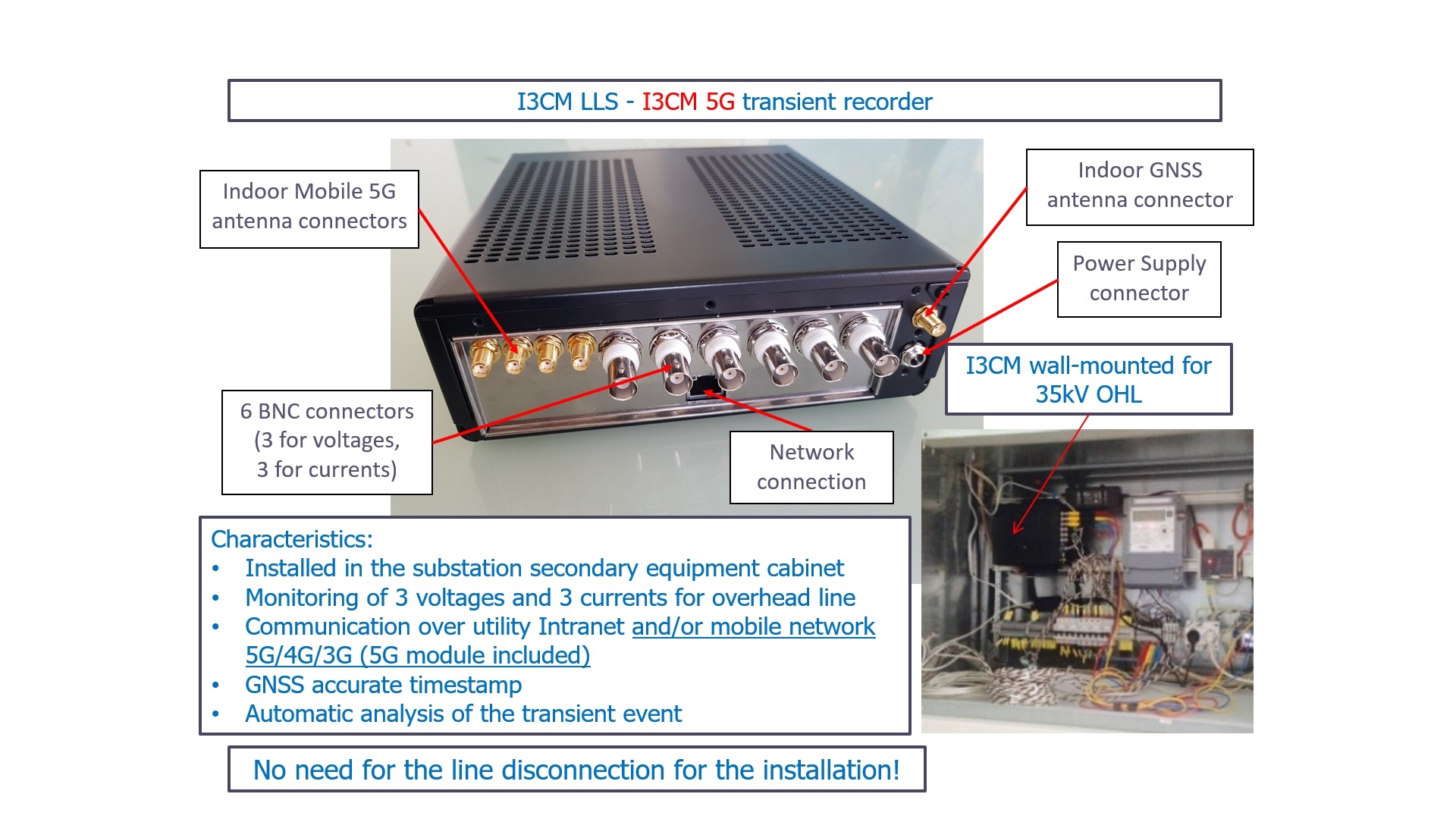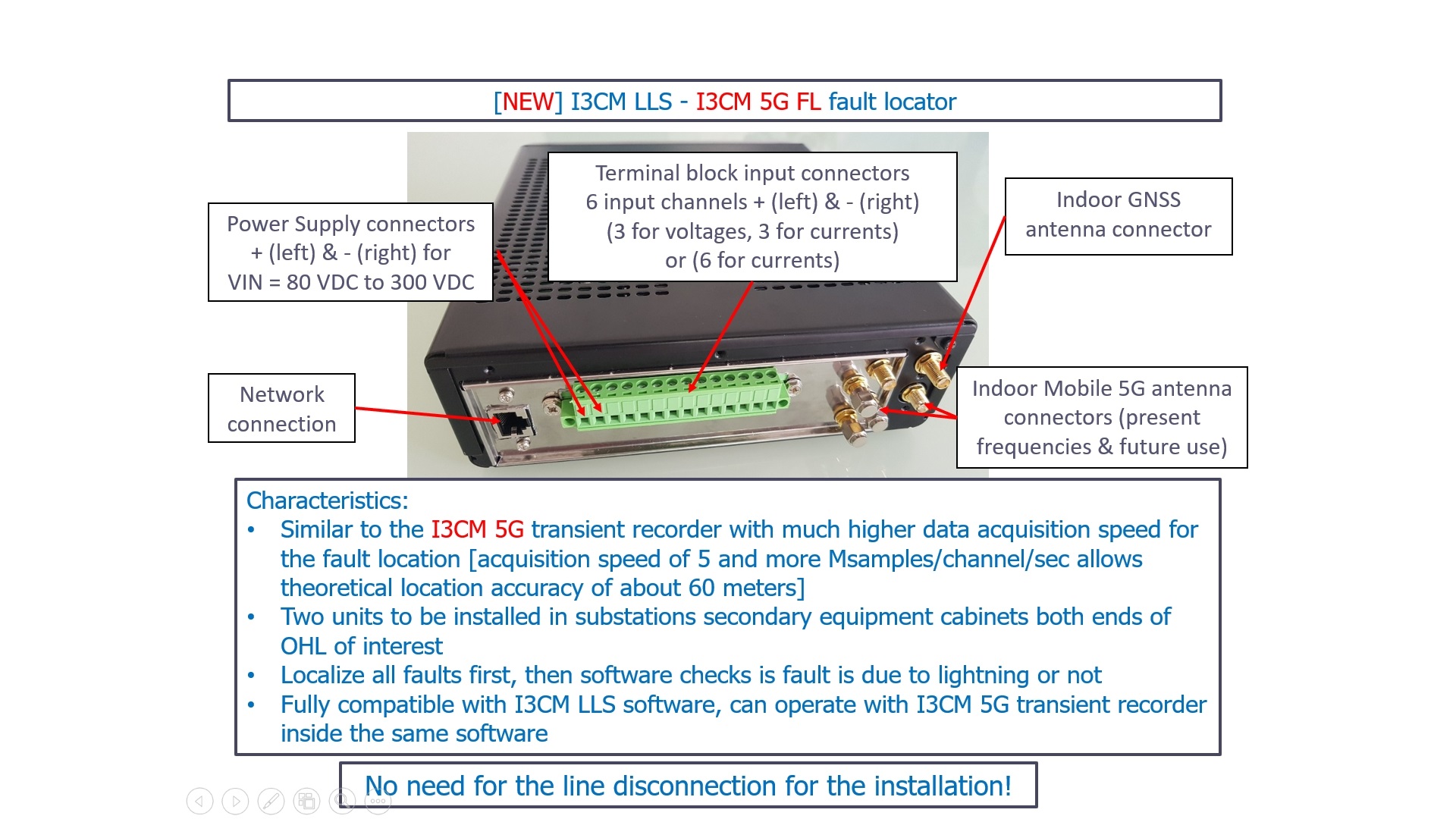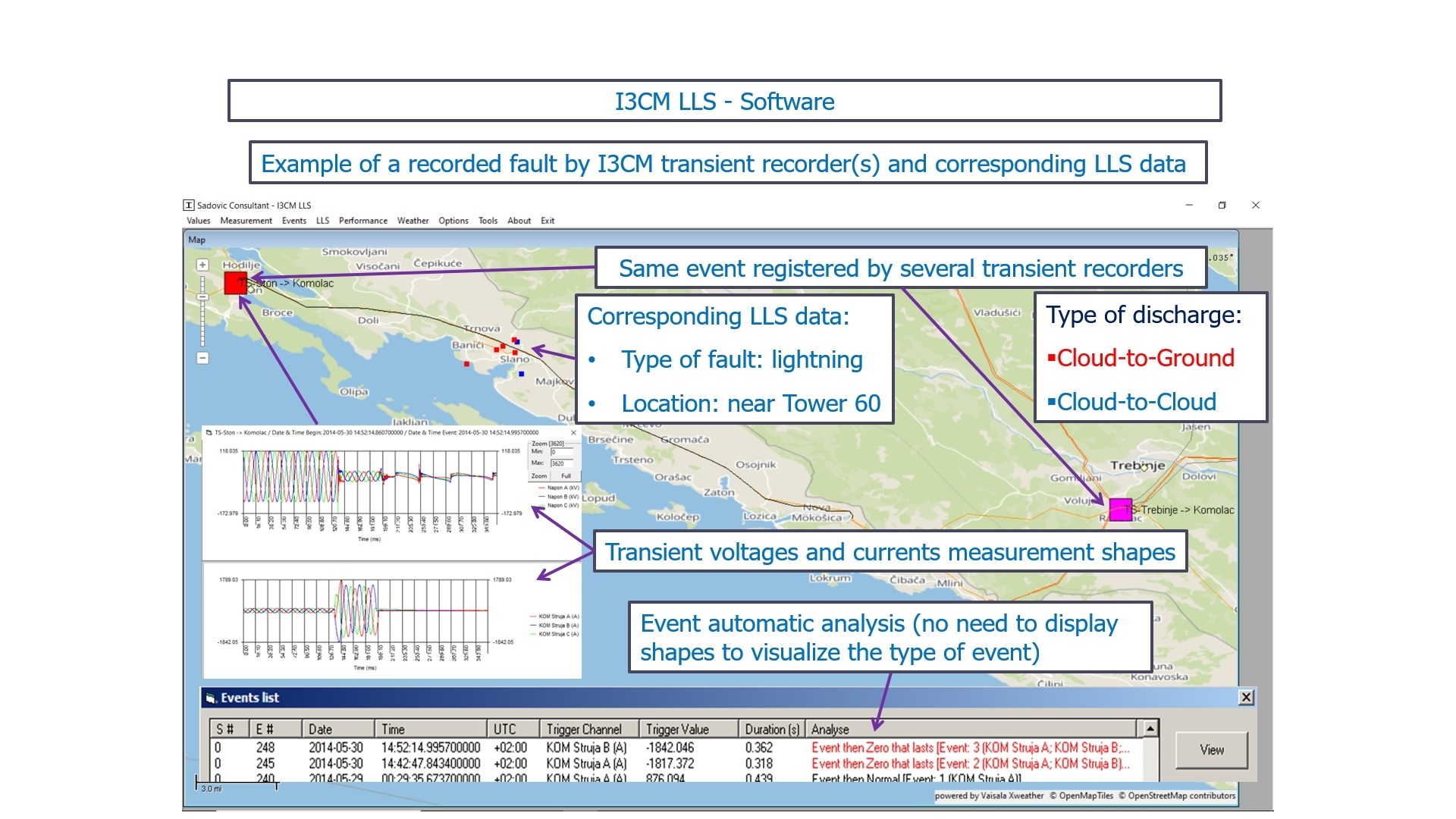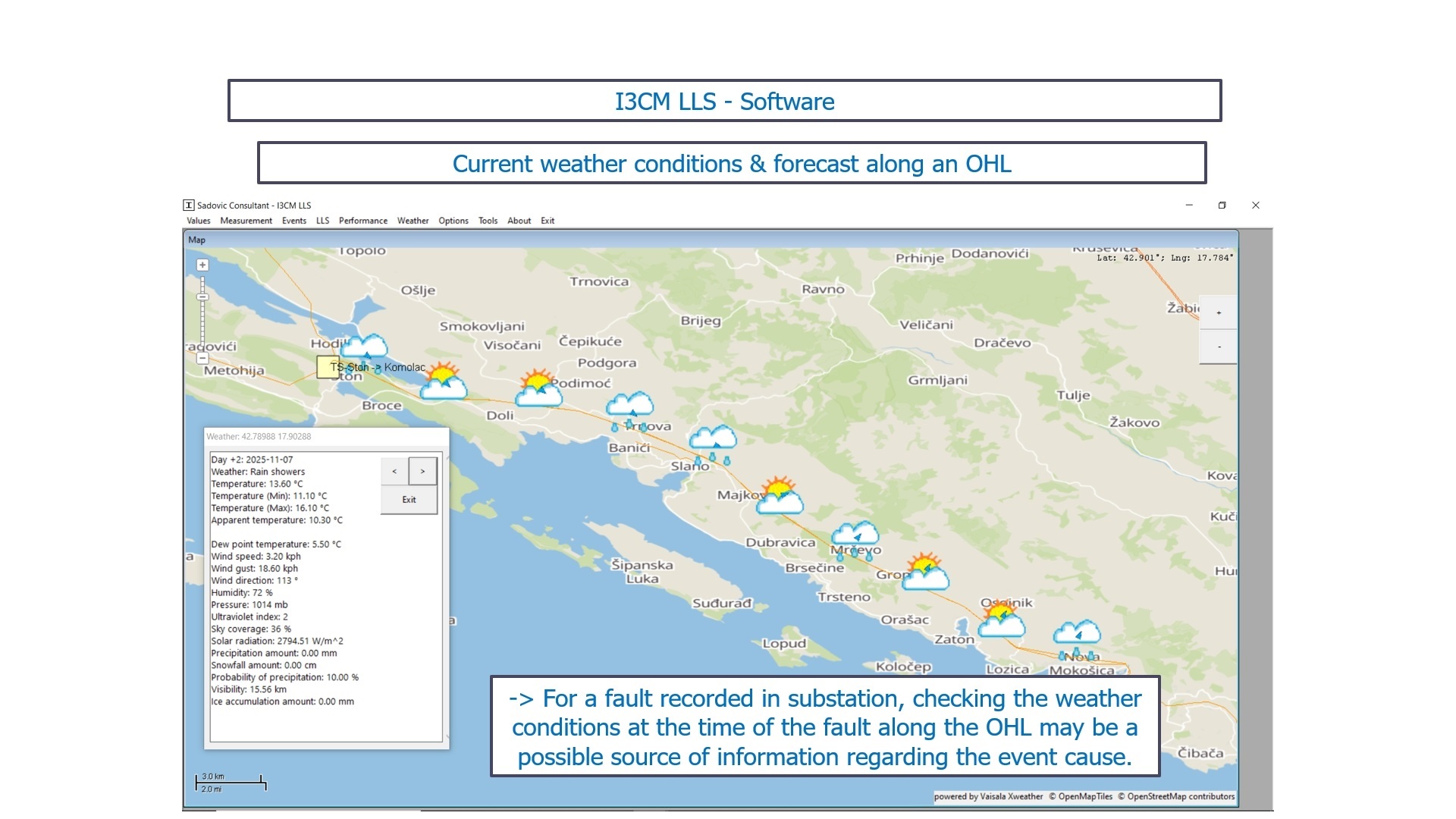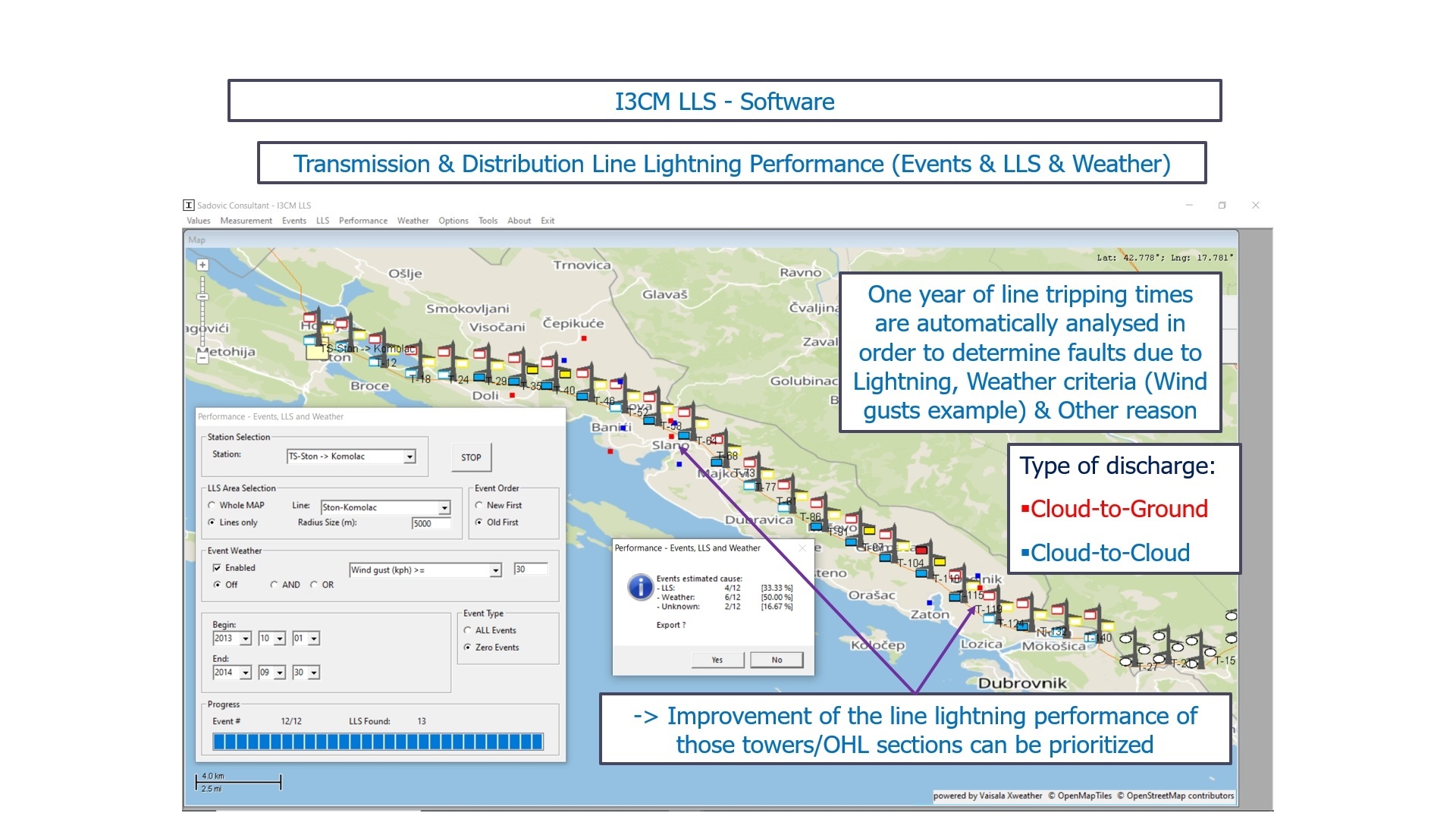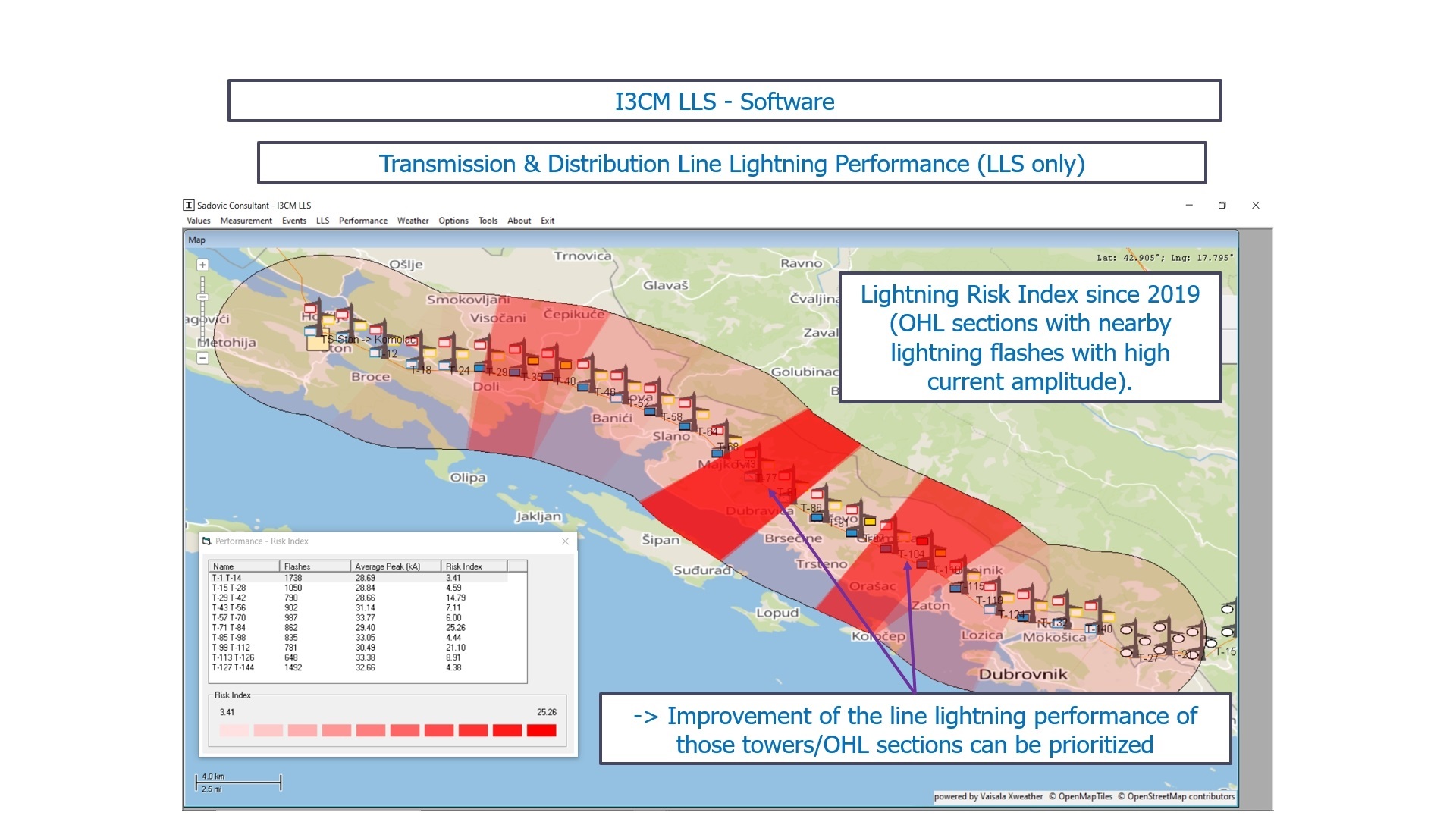I3CM LLS: Integrated Computation, Communication, Control, Measurement with Lightning Location System
I3CM LLS is a standalone solution, equipped with the transients recorders to be installed inside the substations on the secondary equipment of the overhead lines (OHL) of interest. It compares the recorded transient events inside the provided I3CM LLS software with the Lightning Location System (LLS) data, including the weather data such as wind speed and direction in the vicinity of the monitored OHLs.
Some of the I3CM LLS features are:
- Software determination of the sections of the OHL whose performances improvement should be prioritized.
- Real-time comparison of transients events, whereby the measured input is provided by specially-designed transient recorder as a part of I3CM LLS and fully linked with the LLS and weather data.
I3CM LLS can be compared to Fault Locators (two units are required on both side of OHL for the double-ended Traveling-Wave Fault Location); while only one I3CM 5G transient recorder is required for single end of monitored OHL, whereby the same recorder also monitors neighboring OHLs (because fault propagates over the power network). I3CM LLS fault location, in case of lightning, is provided with LLS data (less than one span accuracy advertised by LLS providers) and competes directly the accuracy of the fault locators.
Case study: Real-time lightning fault localization
A transient event has been recorded by the I3CM transient recorder installed in Ston substation (Red color). The same event has been recorded by the I3CM transient recorder installed in Trebinje substation (Purple color). Provided I3CM LLS software checks in real-time if fault is due to lightning, and displays on the map with the OHL the LLS data. Fault is indeed due to a lightning strike nearby Tower number 60.
Weather conditions along OHL are also checked for the fault occurrence time in order to provide end-user as much information as possible regarding the event cause.
Case study: Prioritization of OHL sections improvement
Historical events for a monitored OHL are studied with I3CM LLS software. All lightning strokes that resulted in a transient event (fault) as registered by the I3CM transient recorder are displayed along the OHL.
This enables to identify the sections or towers of the OHL whose performances improvement should be prioritized.
It is also possible to perform similar task with the basic analysis of the Ground Flash Density map and the advanced analysis of the lightning Risk Index along OHL that is function of number, distance and current amplitude of the flashes.

